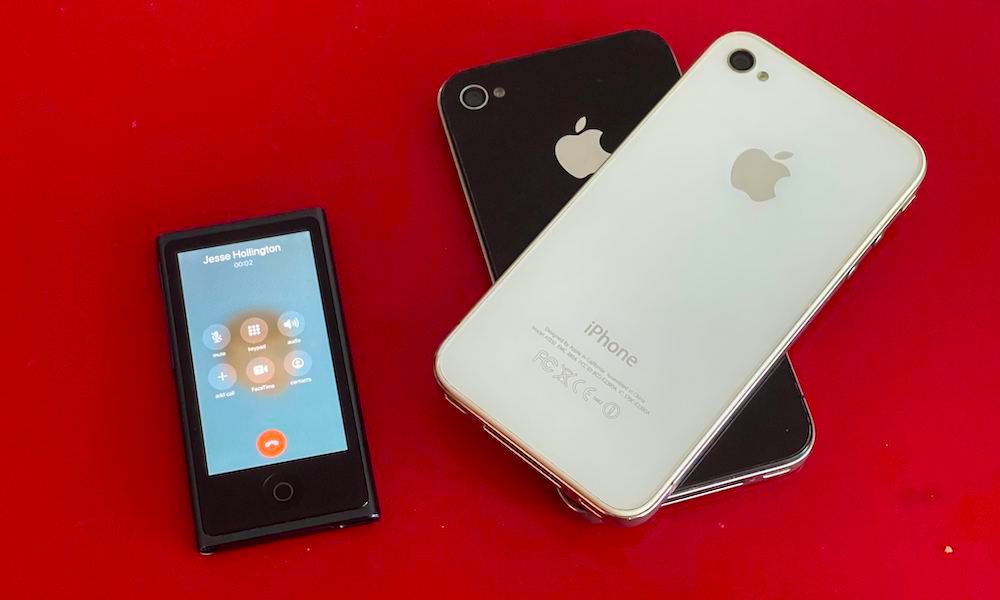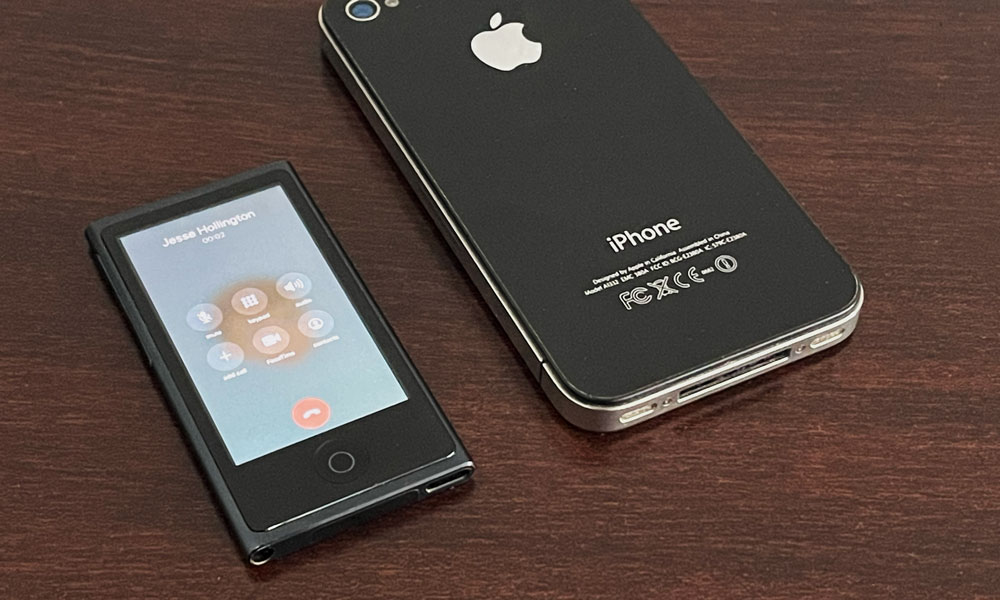Internal Memo from Steve Jobs Reveals Apple Seriously Considered Creating an ‘iPhone nano’
 Credit: Jesse Hollington
Credit: Jesse Hollington
Toggle Dark Mode
It would appear that last year’s debut of the 5.4-inch iPhone 12 mini wasn’t an entirely new idea for Apple, as a new email sent by Steve Jobs reveals that the company considered building a smaller iPhone model as far back as 2010.
At the time, Apple had just released the iPhone 4, which was already incredibly small by the standards of the iPhones we know today. With a 3.5-inch screen, the iPhone 4 came in shorter than the iPhone 5, much less today’s 5.4-inch iPhone 12 mini.
Still, much like Apple had done back in 2005 with the first iPod nano, it clearly felt that it was worth creating an even slimmer and more pocketable version of the iPhone, which would have shared the same branding to become the “iPhone nano.”
Rumours that Apple was working on an “iPhone nano” were pretty common back in 2011, but many folks dismissed these as imaginative speculation of wishful thinking, and later reports dismissed the notion entirely. However, a new email that The Verge stumbled across while looking at the swaths of information released in the Epic vs Apple lawsuit reveals that the idea of an iPhone nano was very much on the table within Apple’s executive ranks.
The email in question was sent out by then-CEO Steve Jobs to set the agenda for a “Top 100” strategy meeting, but sadly, it doesn’t provide much insight into what the mysterious iPhone nano would have looked like.
It’s a typical bulleted list of various items for discussion, featuring such other then-hot topics as Apple’s “Holy War with Google,” a “Year of the Cloud” discussion that undoubtedly led to the debut of iCloud the following year, and even plans for Apple’s “new campus” in 2015 — which of course ultimately became Apple Park.
On the iPhone side, Jobs’ memo also discussed the “Verizon iPhone” — the CDMA model of the iPhone 4 that wouldn’t arrive until early 2011, and was already planning the hardware for the 2012 iPhone 5, including a new antenna design that was undoubtedly needed to support new LTE frequencies and avoid another “Antennagate” scandal.
Notably, there was also talk of releasing a “low-cost iPhone model based on iPod touch” that would have been a replacement for the 2009 iPhone 3GS. While Apple didn’t quite do that at the time, it was the beginning of a strategy that led to both the ill-fated iPhone 5C and later the wildly successful iPhone XR.
The ‘iPhone nano plan’
What’s most notable, however, is that among all of these bullet points is a reference to an “iPhone nano plan” with subheadings for “cost goal” and the expectation that “Jony” — presumably Apple’s design chief Jony Ive — would show an actual model or at least some renderings of what it would look like.
This suggests that Apple at least had a concept design in mind for the so-called “iPhone nano,” even if it hadn’t worked out all the details.
The “nano” moniker makes it pretty clear that Apple wanted to go very small on this one, so it likely wasn’t merely an attempt at a lower-cost model.
After all, when Steve Jobs famously revealed the first iPod nano in 2005 by pulling it out of the smaller “watch pocket” on his jeans, he spent a great deal of time comparing its size and thinness to not only the original full-sized iPod, but pretty much every competing digital audio player on the market, from Creative Labs to Sony to Samsung.
While the “nano” branding has fallen by the wayside in recent years — it was used for seven generations of iPods nano, with at least four major design changes over the product’s lifespan — Apple’s original intent was clearly to indicate a device that was much smaller than a “mini” class of device, or “impossibly small” as Jobs said of the original 2005 iPod nano.
Of course, the iPod nano also arrived in an era when Apple had already used the “mini” designation for a smaller iPod, so another term was clearly needed. The iPod nano was Apple’s first flash-based mobile device, as even the iPod mini still packed in an internal hard drive, which allowed Apple to make it stunningly thinner than anything else on the market at the time.
We may never know for sure whether Apple was going for something similar with the iPhone nano, but for whatever reason, the idea died on the table and never made it into a final product. This may have been simply due to design and engineering challenges, or perhaps Apple just realized that, unlike a digital audio player, it’s not really practical to make an iPhone much smaller.
It’s also interesting to consider that Apple had just unveiled a massive redesign of the iPod nano only a few weeks earlier with the new sixth-generation model, which removed the click wheel and moved to a touch screen for the first time ever.
This may have been partly intended to clear the path for the iPhone nano, but what we ultimately ended up with was the seventh-generation iPod nano in 2012, which bore such a strong resemblance to an iPhone or iPod touch in both design and UI that many expected it to run apps. It didn’t, of course, as it still ran Apple’s closed iPod operating system under the hood, with a fresh coat of paint on top.
Still, it’s easy to imagine that this could have been the design that Jony Ive pitched to Jobs and the rest of the executive team for an “iPhone nano” in late 2010. However, it’s also very unlikely that the technology at the time would have allowed Apple to squeeze in everything necessary to create a full-fledged iOS device.
The seventh-generation iPod nano did gain Bluetooth 4.0 — the only traditional iPod in history to offer any wireless connectivity at all — but no Wi-Fi or cellular radios. It also moved to Apple’s Lightning connector, which was another first for Apple’s classic iPod models. In a sense, the last iPod nano was quite possibly the oddest mobile device Apple ever released, and in retrospect, it really does feel like the result of Apple’s attempt to create an “iPhone nano.”
It also turned out to be the iPod’s swan song. It remained on the market for five years, with only a colour refresh in 2015, until Apple finally killed off the last traditional iPods in 2007, signalling the end of the iPod era.
While the iPod touch remains with us, getting infrequent updates, this differs so significantly from the traditional iPod lineup — even the last iPod nano — that it’s part of the iPod family in name only. It’s really more of a “phoneless” iPhone, since it runs the same versions of iOS, and it’s pretty clear the main reason Apple keeps it around — and will likely still release new models from time to time — is to offer a really affordable path into the iOS and Apple Services ecosystem for those folks who can’t afford to or don’t want to buy an actual iPhone.









